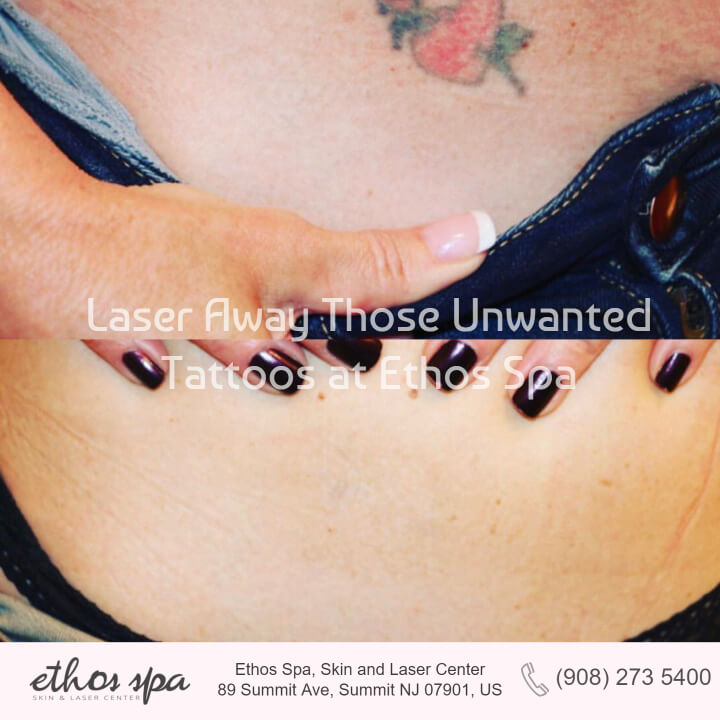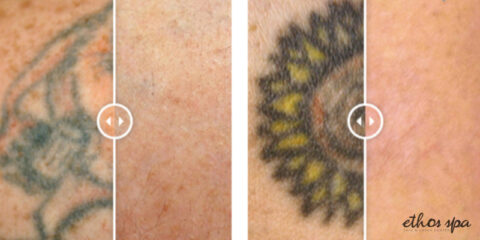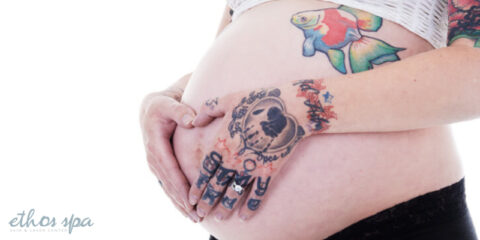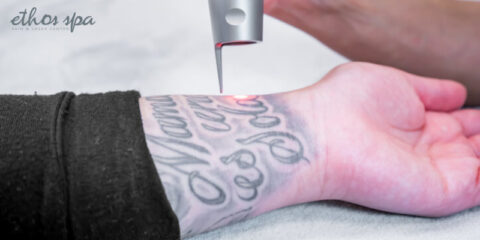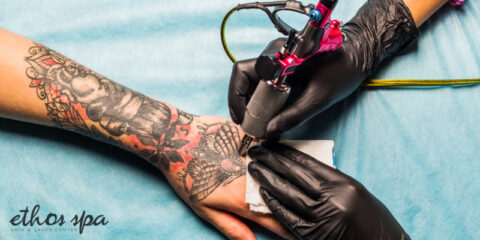Tattoos are a life-long commitment, but some people still seek to remove them because of different reasons. The most common way to do this is by laser tattoo removal. The process sounds simple enough – the technician shoots lasers into the dermal layer to break the tattoo particles apart. But that’s not all there is to it – the science behind it is a lot more complicated.
So how can you prepare for a laser tattoo removal procedure? Make sure to consult a medical professional first before heading to the nearest tattoo removal clinic. Patients only have to eat a full meal, wear loose clothes, and take non-aspirin pain medication before proceeding with the treatment.
Learn everything you need to know about how to prep for tattoo removal below.
Laser Tattoo Removal Checklist: Everything Needed to Prepare
If you’re one of 12% who are considering removing their tats, laser tattoo removal can help with that. But before starting with the procedure, it’s important to consult a medical professional first. They will review the patient’s medical history and discuss the possible risks of laser tattoo removal.
While it is a generally safe treatment, there are still things to prepare before the day of the laser tattoo removal session arrives. Here is a checklist to follow before arriving at the clinic:
- Eat a full meal and keep yourself hydrated before the appointment.
Keeping the stomach full can prevent the patient from feeling dizzy while the procedure is ongoing. Although removal sessions are completed in under 60 minutes, it’s better to be safe than sorry.
- Wear loss clothing especially over the treatment area
If the tats are usually covered by clothes, wear loose-fitting clothes on the way to the clinic and for a few days after the treatment. Since the treated area swells after the procedure, it’ll be extremely uncomfortable to wear a fitted top or squeeze into skinny jeans. Wearing loose clothes will also allow the skin to heal properly by giving it enough room to breathe.
- Take non-aspirin pain relief medication to help ease the discomfort
Ingesting Tylenol before the treatment can help reduce the discomfort during the removal of unwanted tattoos. But why not take Ibuprofen instead of Tylenol? Although they both relieve pain, Ibuprofen might cause bruising around the treatment area. Tylenol won’t result in bruises because it is processed in the liver.
- Do not put lotion or other cosmetics over the tattoo
Lotion and other alcohol-based topical products can irritate the skin. Opt for a numbing cream instead but inform the doctor first.
- Avoid sun exposure weeks prior the treatment and apply sunscreen
The skin becomes more sensitive when it is exposed to the sun. Sun exposure can also cause sunburns and tanning, which makes it difficult for the laser technician to remove the tattoo on the skin. If stepping outside is necessary, apply some sunscreen first.
Is Laser Tattoo Removal Safe?
Yes, laser tattoo removal is a safe way to remove an unwanted tattoo. The recent advancements in laser technology have lessened the risk of tattoo scarring at the laser treatment area. It is also safer than other methods like dermabrasion – a procedure that removes the top layers of the tattooed skin.
Laser procedures work by sending strong pulses from the Q-switched lasers into the dermis layer. These pulses heat the ink underneath the skin, breaking it down to smaller pieces. Another benefit of laser tattoo removal is that it eliminates specific tattoo color on the skin. Some colors respond to the laser better than others, but blue/black pigments are usually easy to remove.
However, laser treatments also face the risk of the following side effects:
- Infection at the treated site
- Incomplete pigment elimination
- Tattoo scars
- Hypopigmentation or hyperpigmentation
Am I a Good Candidate for Laser Tattoo Removal?
Different tats might be better suited for different elimination techniques. Consider laser removal if the tattoo:
- makes you feel self-conscious
- limits your clothing choices
- does not reflect your personality anymore
- changed and doesn’t look good on your skin anymore
- can’t be removed by other tattoo elimination methods
But laser procedures aren’t for everyone. The qualifications for a good candidate include someone who:
- is fair-skinned – Although the laser can easily remove black or blue pigments, it might be a different case for dark-skinned people. The treatment will still work for tanned people, but the treatment might require more sessions for the removal to be completed.
- is healthy – Sending pulses into the skin is only the start of the laser procedure. Once the ink has broken down into micro-particles absorbable by the body, it is the immune system’s job to flush the particles out of the body. If the body is not in a healthy state, treatment should be postponed until the patient feels better.
- already has old tattoos – Older tattoos are easier to remove than newer ones. Over the years, the lymphatic system already got a headstart and removed some of the ink particles. That’s why the tattoo appears faded over time.
- doesn’t smoke – Smoking impairs the immune system and reduces the blood circulation in the body. That’s why the blood will have a hard time flushing the ink particles from the skin out of the body.
- was inked in the back, neck, or face – Laser treatments work best if the tattoo is located somewhere with good blood circulation. This way, more white blood cells can attack the smaller ink particles. Tattoos located in the lower legs, hands, and feet might take longer to be removed completely.
What Happens During a Laser Tattoo Removal Procedure?
Once the consultation about the laser and the removal sessions needed is done, the skin will be tested to observe how it reacts to the laser. If there’s no problem, the first treatment date should be scheduled.
So what happens inside the clinic during laser treatment?
First, the technician will apply a numbing cream to the area. You will also be asked to wear protective eye gear. Once everything is ready, the provider will point a handpiece against the skin which sends laser pulses to the pigment. You might feel a sensation like rubber snapping against the skin – this is completely normal. The whole session is completed within a few minutes, depending on the sizes of the tats.
What Happens After Laser Tattoo Removal?
Right after the procedure, the treated site will start to swell. Loose clothing is recommended because the cloth and the sensitive area won’t brush against each other. Aside from the swelling, the patient might also experience redness, blistering, and minor bleeding for a few days.
In the weeks to follow the treatment, there might be scabbing, peeling, and flaking around the area. This is still normal, but it’s essential to take care of the skin well. As the site heals, make sure to avoid exposure to the sun.
For the tattoo to be completely erased, two to twelve sessions might be needed. During this time, it is best to be acquainted with the doctor and update them with any changes in the treated area.
How Can I Choose the Right Doctor for Laser Tattoo Removal?
The success of the tattoo removal treatment will also depend on the doctor. It’s important to find a dermatologist that has the right education, experience, and training on erasing tattoos with lasers. Picking a doctor you are comfortable with can help you get through the treatment better.
Undo Your Unwanted Tattoo with Laser Tattoo Removal at Ethos Spa
Do your tattoos not suit you anymore? No need to be stuck with old tats when there is an effective way to remove it and ensure your comfort during post-treatment.
At Ethos Spa, we use the gold standard of laser removal technology – the PicoSure laser system. It is a safe and effective device that can remove all colors of tattoo on your body. Our staff is experienced in taking care of all your needs as laser tattoo removal treatment takes place.
Contact us now and book your first tattoo removal session.
Learn more: Ways to Manage Through the Pain and Discomfort of Laser Tattoo Removal

